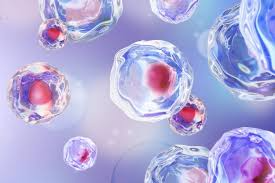
Scientists find new organelle “hemifusome”
Scientists Discover New Organelle "Hemifusome," Redefining Cellular Biology
In a breakthrough that could redefine our understanding of cellular architecture and function, scientists have identified a previously unknown organelle in animal cells, named the “hemifusome.” This groundbreaking discovery adds a new dimension to the already complex world of intracellular structures. The hemifusome, described as a specialized, semi membranous organelle, plays a pivotal role in managing the transition between membrane fusion and cellular signaling processes, particularly in immune cells and neurons. The implications of this discovery stretch across molecular biology, neurology, immunology, and potentially regenerative medicine.
For decades, cell biologists believed that most major organelles in eukaryotic cells had already been discovered ranging from the nucleus, mitochondria, endoplasmic reticulum, and Golgi apparatus to the more recently characterized autophagosomes and lysosomes. But recent advances in cryo electron microscopy and super resolution imaging technologies have enabled scientists to visualize cellular components with unprecedented clarity. It was through these high definition imaging tools that the hemifusome was observed not as an artifact or a transitional structure, but as a consistent and functional organelle with unique molecular markers and behaviors.
The research, published in the journal Nature Cell Biology, was led by a team from the Max Planck Institute of Molecular Cell Biology and Genetics in Dresden, Germany, in collaboration with bioengineers from MIT. According to lead scientist Dr. Erika Langstrom, “The hemifusome is not just a structural anomaly; it serves as a bridge between membrane fusion and fission processes, acting like a molecular ‘mediator’ when vesicles interact with the plasma membrane or each other.” Unlike other organelles that perform distinct, compartmentalized roles, the hemifusome appears to be more dynamic and transient in nature, assembling at key cellular junctions where membranes are actively remodeling.
Structurally, the hemifusome resembles a partially fused vesicle, with one side merged into a target membrane and the other retaining its vesicular shape. This hemi fusion state had been theorized in biochemical models for years but was thought to be short lived and purely transitional. However, what this discovery reveals is that the hemi fusion configuration can be maintained stably in the form of an organelle, potentially acting as a regulatory checkpoint for vesicle trafficking. Proteins specific to the hemifusome such as newly identified markers HFZ1 and Synaptogyrin 5 were found enriched in this organelle, distinguishing it from other vesicular structures like endosomes or exosomes.
Functionally, the hemifusome appears to play a crucial role in controlling synaptic activity in neurons and antigen presentation in immune cells. In experiments on cultured neurons, blocking hemifusome formation resulted in decreased neurotransmitter release and impaired synaptic plasticity. Similarly, in T cells, the absence of hemifusome markers led to poor antigen processing and diminished immune activation. These findings suggest that the hemifusome is deeply integrated into the communication networks of the body’s most information rich and responsive cells, hinting at a possible evolutionary role in optimizing intercellular signaling efficiency.
The discovery also raises important questions about the evolution of eukaryotic cell complexity. Did the hemifusome evolve independently as an adaptive structure to handle complex fusion events, or is it an ancient organelle that had escaped detection due to its transient appearance and similarity to known vesicular intermediates? Some evolutionary biologists speculate that similar structures might exist in simpler eukaryotes or even in archaeal organisms, hinting at a broader significance in the tree of life. Comparative genomic studies are already underway to identify potential homologs of HFZ1 and other hemifusome related proteins in yeast, protozoa, and extremophiles.
Beyond the scientific curiosity, the hemifusome holds potential therapeutic significance. Neurological disorders like Alzheimer’s, Parkinson’s, and epilepsy often involve disruptions in vesicular trafficking and synaptic communication. Likewise, autoimmune diseases and cancer are linked to dysfunctional antigen presentation and membrane signaling. If the hemifusome proves to be a master regulator of these processes, it may serve as a promising target for future drugs or gene therapies. Already, pharmaceutical companies are in early talks with the research team to explore ways of modulating hemifusome activity in disease models using nanocarriers or CRISPR based tools.
This discovery serves as a powerful reminder that even in the so called "settled" fields of biology, much remains to be uncovered. The hemifusome not only expands the list of known organelles but also challenges conventional definitions of what constitutes an organelle in the first place. Traditionally, organelles have been defined as membrane bound compartments with specific, enduring functions. The hemifusome, with its hybrid structure and transient nature, prompts a reevaluation of that definition. Is function more important than structure? Can an organelle exist only at certain times or under specific cellular conditions? These philosophical and practical questions will no doubt fuel future research and debates in cell biology.
In conclusion, the identification of the hemifusome represents a leap forward in understanding the intricate inner life of cells. As researchers continue to decode its structure, function, and role across various cell types, it may ultimately reshape multiple disciplines within biology and medicine. if it becomes a central focus of neurological and immunological research or a stepping stone to even more mysterious cellular phenomena, the hemifusome’s discovery is a testament to the power of scientific curiosity and technological progress. The cell, once thought to be a thoroughly mapped landscape, continues to surprise and with the hemifusome, it opens a new chapter in the book of life.











